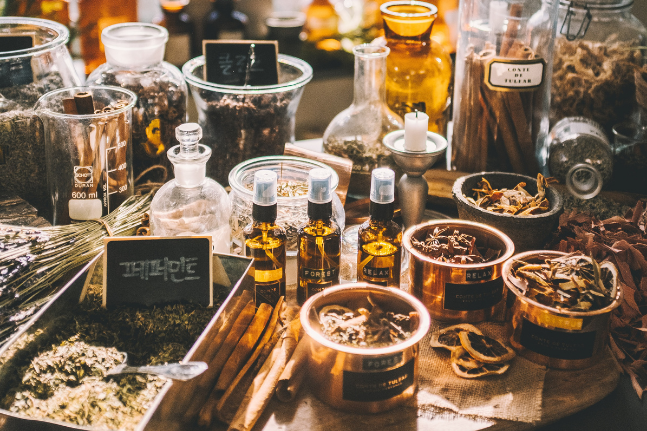Does TCM have antiviral benefits?
One thing that struck me at the beginning of the COVID-19 pandemic was an article I read about a Traditional Chinese herbal formula that locals were using to try to protect themselves from infection.
A few news outlets have reported that people in China were queuing up to purchase Shuanghuanglian oral liquid, sometimes known as double yellow oral liquid, used to relieve symptoms such as fever, cough and sore throat. Rather than getting involved in the argument about the ethics and politics of the situation, I thought I’d look at this formula, and see how it might apply to veterinary practice.
The formula itself is not one we use, and apparently was developed in China in the 1960s to treat acute upper respiratory infection. The active ingredients appear to be honeysuckle, Chinese skullcap and forsythia. Shuanghuanglian is thought to have antiviral, antibacterial and immune benefits, and in vitro studies have demonstrated antioxidant and anti-inflammatory effects.
This indicates that the [TCM] formula may not be appropriate for all people, and may be less suited to older people with a tendency to be chilly or have poor digestion of food.
Although Traditional Chinese Medicine (TCM) formulae consist of a number of individual herbs working together for a synergistic effect, it is interesting to look at each of these individual herbs, and when we might use them in veterinary medicine.
Honeysuckle (jin yin hua) is classified as a Heat and Toxin Eliminating herb in TCM. These are a group of usually bitter-tasting herbs, used to treat imbalances characterised by Heat and Toxins. This may include including infections, inflammation, abscesses, burns or even cancer. Many of these herbs may have antibacterial and antiviral properties. Forsythia (lian qiao) is also part of this group, and these two herbs may have effects similar to broad-spectrum antibiotics.
Honeysuckle is traditionally used in the treatment of carbuncles, sores and boils, skin allergies, common cold, pharyngitis, tonsillitis and acute diarrhoea. Forsythia has traditional use in treating abscesses and carbuncles, swollen lymph nodes, fever and the common cold. Both honeysuckle and forsythia occur in a formula called qing ying tang that we find useful for very Hot conditions, including acute severe itch with red skin and immune-mediated myositis with redness of the eyes. In vitro studies of this formula have shown antipyretic and antibiotic effects. Clinical studies have shown benefits in treating uveitis, septicaemia and psoriasis. Jin yin hua and lian qiao are pungent, and expel Heat from the superficial layers, which makes them more suited for superficial infections.
As for all TCM formulae, we only prescribe qing ying tang for suitable cases, and would avoid use in cold-deficient or feeble patients. This indicates that the Shuanghuanglian formulae may not appropriate for all people, and may be less suited to older people with a tendency to be chilly or have poor digestion of food.
The other ingredient in Shuanghuanglian is Chinese skullcap (or Baikal skullcap, huang qin). This is classified as a Dampness and Heat clearing herb. These herbs may be used to treat hepatitis, infections, abscesses or dysentery. They will usually be Bitter and Cold. Scutellaria is traditionally used to treat acute diarrhoea, nausea, high fever with thirst, jaundice, cough with yellow sputum, vomiting and coughing of blood. Some of the constituents of Scutellaria include flavonoids, which have been shown to have anti-inflammatory, anxiolytic, liver protective and nerve-cell protective effects, and have been shown in vitro to have cancer protective effects.
Chinese skullcap is found in many TCM formulae we use commonly as part of integrative veterinary support. We may also add it to other specific formulae used in chronic health conditions such as cancer. It is found in long dan xie gan tang, often used for its antiinflamatory effects in acute allergic skin disease and otitis, and xiao chai hu tang, a harmonising formula used in immune-mediated disorders, liver and gall bladder disorders, acute and chronic bronchitis and cancer support.
The closest formula to Shuanghuanglian that we may use is yin qiao san, honeysuckle and forsythia powder, which belongs to the category of formulae that release Exterior Wind Heat. In this formula, Honeysuckle and Forsythia are combined with other herbs to improve the effects and harmonising herbs to reduce side effects. It is supposed to be used in the early stages of infection, when there is fever, aversion to cold, increased thirst and rapid pulse. It has been used in kennels and horse stables at the first sign of respiratory disease, to help prevent generalised infection, and is given up to four times daily. If symptoms change, with more Damp and less Heat, then other formulae may be warranted.
This shows that perhaps Shuanghuanglian may be appropriate in the early stages of coronavirus infection for some patients, and may help prevent progression of infection.
As part of an integrative approach, basic hygiene is imperative. WHO has recommended hand washing with soap and water, or alcohol-based rub, to remove the virus, as one of the most important protective measures. Although the use of face masks is questionable, you can’t blame people living in Wuhan and Hubei province for wishing to use these. And if people are appropriately prescribed Shuanghuanglian by a good TCM practitioner, ideally prepared with good quality control, then this may have some benefit.








